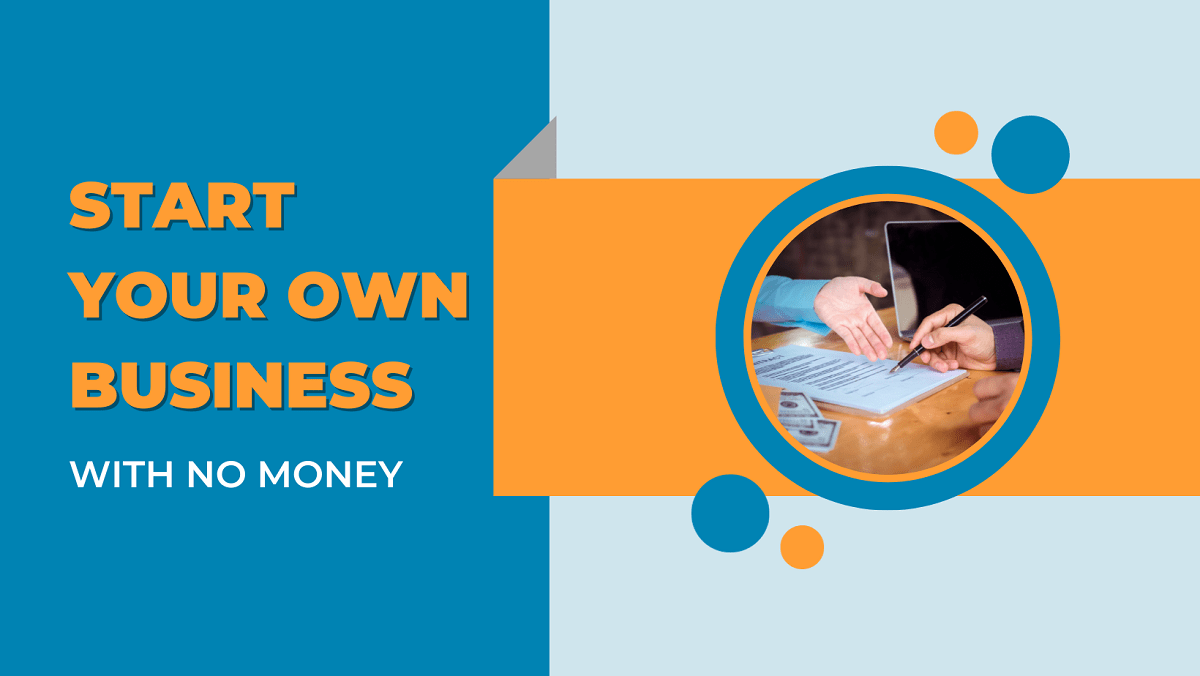Physical Address
304 North Cardinal St.
Dorchester Center, MA 02124
Physical Address
304 North Cardinal St.
Dorchester Center, MA 02124

The dream of owning your own business is attainable even if you don’t have much startup capital. While it may seem impossible, with careful planning, creativity and determination, you can get a business up and running without taking out massive loans or seeking investors. In this article, we’ll walk through the key strategies for starting a business with no money.
Table of Contents
The digital age has made starting a business far more accessible by dramatically lowering barriers to entry. While starting a traditional brick-and-mortar business often requires significant capital, inventory and paid advertising, the online world offers much leaner startup models.
When selecting an online business idea, keep costs low by focusing on these criteria:
Leverage Existing Skills – Choose an idea that aligns closely with skills you already have rather than something completely new. For example, former teachers can leverage their teaching experience for an online tutoring business. Using existing skills means you don’t have to invest time and money into learning something entirely new before launching.
Requires No Significant Inventory – Steer clear of business ideas that require manufacturing or purchasing products in bulk upfront. Opt for service-based businesses or online stores that use dropshipping so you don’t have to buy and hold inventory before making sales.
Has Digital Delivery – With information products like ebooks or online services, you can sell directly to customers without physical materials to create and ship. Digital delivery keeps costs low.
Can Start Part-Time – First launching your business as a side hustle allows you to test ideas without as much risk. It also means you don’t require significant startup capital to replace a full-time income. Once you gain traction, you can transition to working full-time.
Has Low Equipment or Space Needs – You likely already have basic equipment like a laptop, phone and internet connection. Avoid businesses that require expensive proprietary equipment or retail space which necessitate major upfront investment.
Relies on Organic Marketing – Paid advertising has a high cost that requires significant revenue to sustain. Organic marketing like SEO, social media marketing and content marketing costs much less allowing you to bootstrap growth.
Popular low-cost online business models that meet these criteria include:
Carefully selecting a lean startup model allows you to launch an online business aggressively controlling costs. This prudent foundation sets you up for bootstrap success.
Even if you select a barebones business model, you may need some startup capital. Here are creative ways to fund your business without taking out a loan:
As you launch, keep your expenses as low as absolutely possible to extend your capital. Tips for this include:
Rather than taking on loans to scale quickly, grow your business slowly and organically at first. Re-invest every dollar you make back into the business. Find inexpensive ways to grow including:
Over time, you can scale and become profitable even with very limited startup funds. It takes creativity, patience and a tenacious work ethic. But the payoff of owning a successful business without burdensome loans is worth it.
It’s entirely possible to achieve your dream of entrepreneurship on a bootstrap budget. With the right business model, lean startup approach, organic growth strategies and determination, you can build a thriving business from scratch with very little capital. Follow the tips in this guide to make your business goals a reality, even if you don’t have much money.